


Damien Social Welfare Centre
DHANBAD, JHARKHAND, INDIA
in the service of humanity, 1964 onwards
Sponsor a child for her studies and food
Support for the Leprosy Patients
Home About us Health Services Education Services Rehabilitation Services Nirmala Nursing School Vocational Training
A Short note on the history and nature of the organization
Damien Social Welfare Centre is named after St. Damien, the Leper Priest, as he is better known, a hero of Molokai, Hawaii. He served the lepers at Molokai from March 1864 till his death on 13 April 1889. He volunteered to serve the abandoned leprosy patients in Molokai, when no one, even under the vows of obedience, agreed to go. At the age of 49 Fr. Damien had become a victim of the dreaded disease in the course of serving the outcaste lepers.
Fr.
Mike Kavanagh, S.J. an American Christian Missionary
from Maryland Province, the US, started Damien Social Welfare Centre
(DSWC) in
1964
as part of a Social Action Plan of St. Anthony’s Church, Dhanbad. DSWC was
formed as an inter -denominational and inter-religious society that cares
for people suffering from leprosy. The Society distributed food, provided
housing and dispensed whatever medicines were available with it. Fr. Kavanagh involved the members of his Christian community, doctors, nurses
and the leading citizens of the town, to contribute financial support as
well as their time and service.
Within a short period of time, there was a growing realization that the needs of the leprosypatients required a much more professional approach than taken then. Hence they undertook a comprehensive and multifaceted survey to find out more about their situation and thus to plan for their treatment, education and rehabilitation. As a follow up to the findings, in 1965, Dr. A.K. Mukherjee was made Director of Medical Services in order to initiate a chain of mobile clinics in Dhanbad District. As a result, within a short time, 2,100 cases of leprosy were registered for treatment. The German Leprosy & Tuberculosis Relief Association (GLRA) was impressed by the joint effort of all communities and gave whole hearted support.
In 1967 the Samaritan
Sisters of Kerala, India, accepted the invitation of Late Cardinal
Lawrence Pichachi, then  Bishop
of Jamshedpur Diocese, to
Bishop
of Jamshedpur Diocese, to
join DSWC as part of its medical action, which
then took care of 25 mobile clinics with the help of a jeep, donated by
Caritas International. Additionally, Sr. Dr. Luca, S.H. Sp. joined the team
and gave new impetus to the medical program which covered over 130
villages. In 1969 DSWC became a registered society under the Societies
Registration Act of 1860 in Bihar as a ‘…voluntary, charitable and
non–profit making organization dedicated to the detection, treatment and
eradication of leprosy in the district of Dhanbad.
In
1972, Fr. Lawrence J Hunt, S.J., a successful educationist in USA and
Jamshedpur, succeeded Fr. Kavanaugh, S.J. as Director of Damien Social
Welfare Centre. During his stewardship, DSWC developed into the massive
social service project, spread over the entire northern part of the Dhanbad
district, from Gomoh to Kumardhubi, and embracing such diverse activities as
leprosy hospital, leprosy clinics, schools and hostels for the children of
leprosy patients, training centres for boys and girls, and adequately
equipped rehabilitation centre with the necessary machines as well as a
large programme of Public Education with the logo: "Leprosy is Curable". He
was always available for the people. He made the leprosy patients realize
that they were human beings and not an outcast.
By the time Fr. Larry Hunt left for USA in 1983, the Centre had a 150 bedded well equipped central hospital, two field hospitals, 156 clinics, a leprosy control project for a population of 7,00,000 and a rehabilitation department. It had a hostel each for girls and boys with facilities for carpentry, smithy, motor driving, motor mechanics, welding, turning, tailoring, agriculture and home science. It also ran two paramedical workers' training centres. Mr. Sircar, once a leprosy patient from Puri, Orissa was the manager of the Main Hospital. The Damien Hospital was treating nearly 24,000 leprosy patients, all over Dhanbad district. He had roped in the students of De Nobili School, Dhanbad, to collaborate in the eradication of leprosy, and to remove ignorance and fear concerning the disease.
As it is always difficult to replace a legendry leader, so it was not easy to replace Fr. Hunt. Thus 1983 to 1986 DSWC had hard time. After Fr. Larry Hunt’s departure things were not smooth for Fr. Walter Kongari SJ, who succeeded Fr. Larry Hunt. He was appointed only for the time being. He served the organization only for a year. Then, Fr. JC Prabhu SJ was brought in to reshape DSWC, but due to his ill health, he could not take DSWC any further.
Fr. Vijay Bhat came as the
Acting Director in place of Fr. JC Prabhu, but later on through his
perseverance and hard
work not only sustained DSWC
and all it’s units but also initiated a small
fund for its future work. From 1986 to 1995 was the Golden Era of DSWC.
During these years Fr. Bijay by his shear charismatic leadership and
planning started the Nirmala Female and Child Ward, the Home for the Aged
(VIP) at Govindpur, the Multipurpose Halls in Nirmala Hospital and in
Nirmala, Govindpur and Gomoh Hostel and schools were built. Besides the
female ward at BMP and the high school building at Gomoh are the proofs of
his leadership and vision. Fr. Bhat opened the school doors for the local
children so that the children from the leprosy families overcome the fear of
inferiority complex and compete in their school/class along with the other
students. He also sent capable, motivated students for higher education and
technical training. Many of such students are holding good government or
private jobs. He did not limit himself to the people themselves but he
found time for trees and for animals. The tall trees and greenery in the Nirmala Ashram are his gift to DSWC and he loved them all. Fr. Vijay served
the organization till 1995.
Fr. Gerald Martin D’
Souza succeeded Fr. Bijay. It was quite difficult to cope up the demands of the
time. It was the time when government
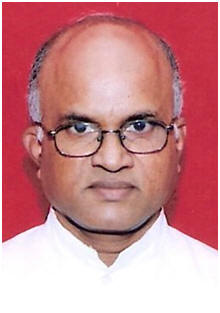 started showing some interest in the
leprosy work. Fr. Gerry Martin joined
hands with the government in the
started showing some interest in the
leprosy work. Fr. Gerry Martin joined
hands with the government in the
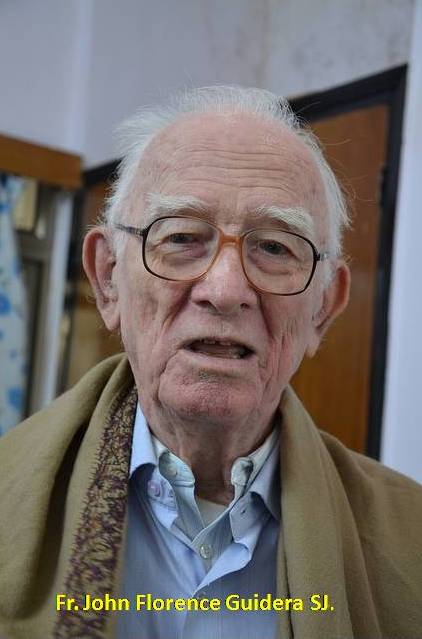 campaign of eradicating leprosy. But
unfortunately government system was slow in providing medicine and releasing
funds. In the bargain DSWC lost the touch of foreign benefactors and well
wishers. There was financial constraint at DSWC. It was the time when Fr.
John Florence Guidera SJ, a big structured man joined DSWC to offer his
service. He had a charismatic personality. It is he, who started ‘One Dollar
Club’ among his friends in the US. He had big heart for the poor people. He
always talked about the youth. He only started Mac Fund to provide job
oriented training to the youth, so that these youth, having under gone
training, could gain self confidence and become the bread winner of the
family. Fr. Guidera managed to rehabilitate many families because of his
keen interest in them. Fr. Gerry Martin completed his term in 2001. And
there came Fr. Alex Misquith SJ for time being. He stayed at DSWC only for
two years.
campaign of eradicating leprosy. But
unfortunately government system was slow in providing medicine and releasing
funds. In the bargain DSWC lost the touch of foreign benefactors and well
wishers. There was financial constraint at DSWC. It was the time when Fr.
John Florence Guidera SJ, a big structured man joined DSWC to offer his
service. He had a charismatic personality. It is he, who started ‘One Dollar
Club’ among his friends in the US. He had big heart for the poor people. He
always talked about the youth. He only started Mac Fund to provide job
oriented training to the youth, so that these youth, having under gone
training, could gain self confidence and become the bread winner of the
family. Fr. Guidera managed to rehabilitate many families because of his
keen interest in them. Fr. Gerry Martin completed his term in 2001. And
there came Fr. Alex Misquith SJ for time being. He stayed at DSWC only for
two years.
Fr. Walter Crasta succeeded
Fr. Alex Misquith in 2003. It was Fr. Walter Crasta, who took the challenge
to teach them
the value of self dignity. Till
his arrival everything in the Hospital and
in the School was free. This was also the time when WHO declared that
leprosy is eliminated from India. The foreign support started drying up. The
big blow came when GLRA withdrew its support. However, before withdrawing
GLRA helped DSWC to construct Nirmala School, Govindpur. Nevertheless, it
was a difficult time for DSWC. Due to financial constraint DSWC had to close
down its field hospital at Baramsia Mercy Post. De Britto School and
technical center
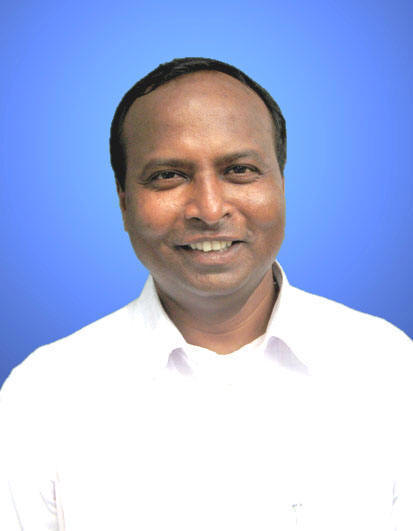 had to be given to Jamshedpur Jesuits. Nonetheless, DSWC
can not forget that it was Fr. Walter, who
taught these people from the leprosy background that “there is nothing in
the world that is free”. He started with minimum charges in the hospital and
in the school. In the beginning people were reluctant to give, but
eventually they are giving whatever they can. During his time in 2009
English Medium School was started seeing the need of the present time. Now
there Hindi Medium and the English Medium School are simultaneously going on
at Nirmala School, Govindpur. Fr Walter Crasta served the organization till
2011. Fr. Bipin Pani succeeded him.
had to be given to Jamshedpur Jesuits. Nonetheless, DSWC
can not forget that it was Fr. Walter, who
taught these people from the leprosy background that “there is nothing in
the world that is free”. He started with minimum charges in the hospital and
in the school. In the beginning people were reluctant to give, but
eventually they are giving whatever they can. During his time in 2009
English Medium School was started seeing the need of the present time. Now
there Hindi Medium and the English Medium School are simultaneously going on
at Nirmala School, Govindpur. Fr Walter Crasta served the organization till
2011. Fr. Bipin Pani succeeded him.
BRIEF NOTES ON VARIOUS ACTIVITIES/UNITS OF DSWC
A. NIRMALA LEPROSY HOSPITAL, GOVINDPUR
Nirmala Leprosy Hospital,
Govindpur is situated 14 KM from Dhanbad railway Station. It was opened in
1969 and has
gradually grown into a 150 bedded Hospital equipped will all the
requirements to treat cases of leprosy and tuberculosis. Today, N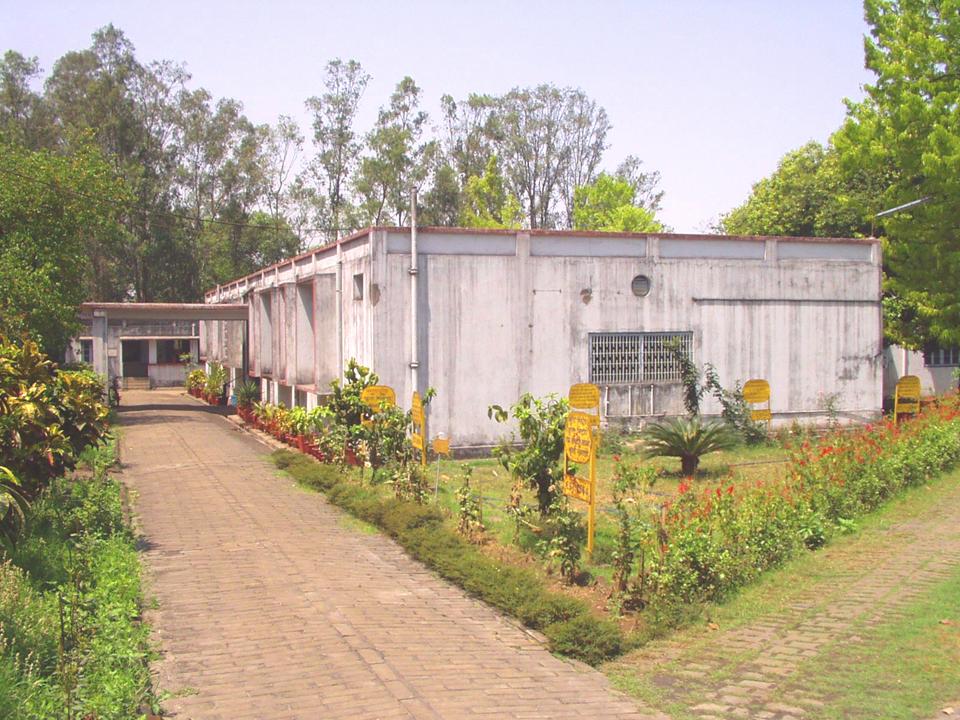 irmala
Leprosy Hospital is better known to the public than DSWC itself. The
hospital had been providing free treatment to all, irrespective of social
status, caste or religion till 2008. But as the funding supporting started
drying up, it started charging minimum consultation and hospital fees to the
patients At present Nirmala Hospital is charging Rs 30/- to the in-patients
for per day. In addition to regular treatment of ulcers, a great emphasis is
placed on physiotherapy to help the patients improve their strength, blood
circulation and agility. Reconstructive surgery is also available to the
patients, though of late the number of patients for the surgery has reduced.
In 2012 Eye Unit is started, with the help of St. Francis leprosy Guild, UK,
for the benefit of all. There is also facility for the eye operation. At
present this Hospital is also opened for the benefit of general patients.
irmala
Leprosy Hospital is better known to the public than DSWC itself. The
hospital had been providing free treatment to all, irrespective of social
status, caste or religion till 2008. But as the funding supporting started
drying up, it started charging minimum consultation and hospital fees to the
patients At present Nirmala Hospital is charging Rs 30/- to the in-patients
for per day. In addition to regular treatment of ulcers, a great emphasis is
placed on physiotherapy to help the patients improve their strength, blood
circulation and agility. Reconstructive surgery is also available to the
patients, though of late the number of patients for the surgery has reduced.
In 2012 Eye Unit is started, with the help of St. Francis leprosy Guild, UK,
for the benefit of all. There is also facility for the eye operation. At
present this Hospital is also opened for the benefit of general patients.
B. BARAMASIA MERCY POST [BMP]
In 1966 Rev. E. Sadiq, pastor of the Anglican Church gave permission to use his building at Baramasia as a clinic in order to serve the patients from nearby villages. Soon it attracted many leprosy patients to Baramasia Mercy Post (B.M.P) It could give nursing service to 60 leprosy patients at a time. It houses patients with severe wounds and ulcers. The clinical facilities also provided outpatient services. Doctors from Nirmala regularly visited BMP. Whenever more specialized care was required; the patients were shifted to Nirmala Leprosy Hospital, Govindpur. But in 2009 the hospital service at BMP had to close down, as number of the patients declined due to lack of money from the part of the patients. It remained closed almost for two year. When Fr. Bipin came to the organization, he slowly started clinic service once a week and extended DSWC’s rehabilitation center by installing 8 handlooms to BMP. At present 8 persons are running handlooms and 6 persons are running charkha at BMP. Fr. Bipin also started vocational training viz. tailoring training for the school dropout girls. He gave new name to the center called Damien Vocational Training Center (DVTC), Baramasia. At present 15 girls are learning tailoring.
C. BARAMASIA REHABILITATION TRAINING CENTRE (BRTC)
Rehabilitation marks the culmination of the leprosy control programme. The main objective of the rehabilitation programme for the cured patients is to improve their physical, mental and social, well-being. DSWC started BRTC in 1974. After a number of attempts in various activities, we have limited ourselves to handloom cloth production. We engage a work force of 81 for producing bandages, gauze, OT material, bed sheets, towels, saris, etc on 18 handlooms, twelve power looms, a manual drum,a power drum and calendaring machine. Since we want to employ as many as possible, we are forced to adopt very primitive labour- intensive methods. Though BRTC is running at lose, yet we know that it is giving bread and butter to 81 families. We are hoping that some benefactors would give us 25 KV generator so that we could solve the problem of electricity. Thus the rate of lose could be minimized.
D. LEPROSY COLONIES
Settling down the cured patients in various colonies scattered in Dhanbad District has been a major concern of DSWC, as they were not accepted back into their homes. With the help of the Govt. (Indira Gandhi Awaas Yojana), local industrialists and other benefactors, 21 colonies had been built in Dhanbad district. Though isolating the leprosy-affected persons is against WHO directives and even against humanity, somebody has to provide shelter to these helpless people. As far as possible, DSWC continued to provide sanitation, drinking water, power supply, medical care and education of their children. The integration policy of the Government has affected our work and we are making efforts to organize the leprosy colonies into Self-Help Groups through training courses for leaders, women and youth.
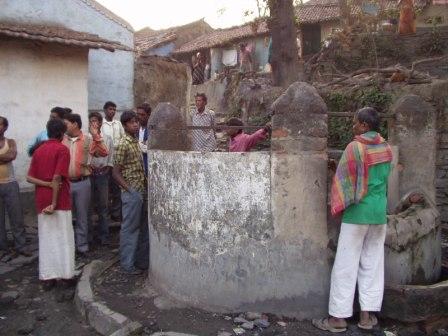
E. HOME FOR THE DISABLED AND AGED (VIP)
Located in Nirmala Hospital campus is a home for the Aged and Disabled called VIPI. It means though they are of no use for the family and for the society, yet they remain important for DSWC and so they are called Very Important Persons. These are the people, who have no family to care for them or have not been accepted back into their family once cured. At present there are 52 of them at VIP. Most of them, with DSWC’s initiatives and effort, are getting pension from the government.

F. SHOE DEPARTMENT
The
Rehabilitation Society of Government of India has recognized DSWC as one of
the centers for Reconstructive Surgeries and manufacturer of Micro Cellular
Rubber [MCR] shoes. Our Shoe Dept. employs 3 full time cobblers for
manufacturing / repairing shoes and sandals. Because of the presence of a
rather big number of cured leprosy patients with deformities and ulcers
(mostly from pre-MDT days) spread in 21 leprosy colonies and beyond, besides
the new cases that come to our hospitals, a great strain is experienced by
this department.
G. EDUCATIONAL ACTIVITIES
DSWC has recognized the need for academic education in the upbringing of the children of the leprosy affected persons and thus to rehabilitate them. All the children of leprosy patients were offered free education with free books; uniforms, food and lodge up to secondary school level. DSWC also supported those students who are interested in pursuing their studies further. Through this educating process we envisage a better future for the leprosy affected people under the care of their own children. Following the integration policy that brought about financial constraints on our activities, we are insisting on token contribution.
Nirmala School at Govindpur was started in 1968. the purpose was to give children of leprosy patients education and self confidence. Simultaneously DSWC also started Nirmala Girls’ Hostel to create educational atmosphere and protect these girl children from the early marriage. At present there are 176 girls in the Hostel and there are 287 children in the school. Nirmala Hindi Section is from Kinder Garten to Grade. VIII. In 2009 Nirmala English School was started so that the education activities of DSWC become self sustaining. At present Nirmala English Section is from LKG (Lower Kinder Garten) to Class IV.
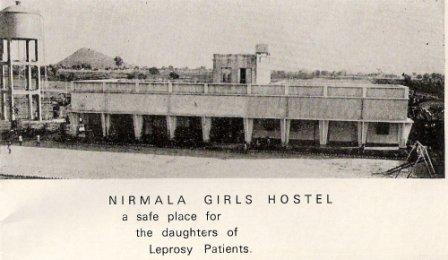
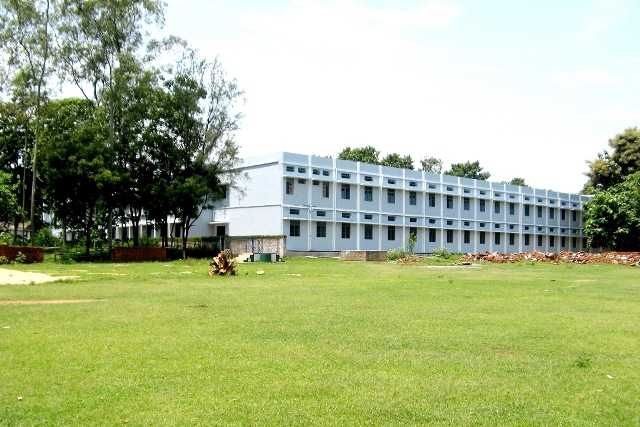
H. FIELD CLINICS
Finally, a word on field
clinics: DSWC had a population of around 13 lakhs in its control area. We
used to manage over 75 Drug Delivery Points (DDP) with 27 field staff namely
3 Non medical Supervisors [NMS] and 24 paramedical workers [PMW}. With the
introduction of “Integration” the scenario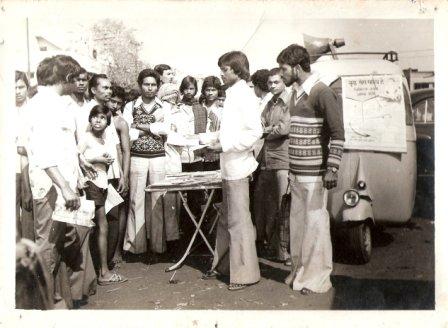 has changed. "Integration" is a
government policy which mandates that leprosy patients must seek medical
services from government run facilities rather than much more capable
private run facilities such as the Nirmala Hospital. Unfortunately the
patients do not receive the care they require or even the medicine which
could cure their illness at the Government outlets. Because of this policy,
DSWC had to retrench all the field staff following the withdrawal of support
from
funding agencies for the field work. The problem of leprosy still persists.
We still get new cases of leprosy almost everyday. Government does not
accept the fact that there is leprosy in this part of India. In spite of
government’s indifferent attitude DSWC is going ahead with its mandate of
serving persons affected by any stigmatic or communicable disease to provide
them quality medical services towards their total wellbeing and fullness of
life. That is why this year DSWC also initiating the survey work. We hope
after the survey we will be able to get the road map for DSWC.
has changed. "Integration" is a
government policy which mandates that leprosy patients must seek medical
services from government run facilities rather than much more capable
private run facilities such as the Nirmala Hospital. Unfortunately the
patients do not receive the care they require or even the medicine which
could cure their illness at the Government outlets. Because of this policy,
DSWC had to retrench all the field staff following the withdrawal of support
from
funding agencies for the field work. The problem of leprosy still persists.
We still get new cases of leprosy almost everyday. Government does not
accept the fact that there is leprosy in this part of India. In spite of
government’s indifferent attitude DSWC is going ahead with its mandate of
serving persons affected by any stigmatic or communicable disease to provide
them quality medical services towards their total wellbeing and fullness of
life. That is why this year DSWC also initiating the survey work. We hope
after the survey we will be able to get the road map for DSWC.
At present DSWC continues with the office clinic on Monday and BMP clinic on Tuesday.
Photo Gallery